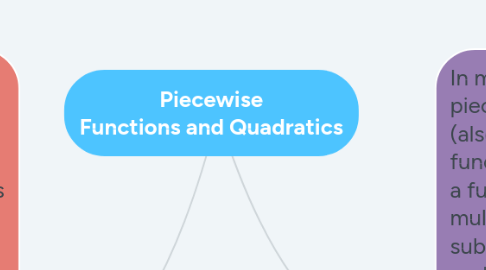Piecewise Functions and Quadratics
by Lauren Eubanks


1. In mathematics, a piecewise-defined function (also called a piecewise function or a hybrid function) is a function which is defined by multiple sub-functions, each sub-function applying to a certain interval of the main function's domain (a sub-domain).
1.1. The word piecewise is also used to describe any property of a piecewise-defined function that holds for each piece but not necessarily hold for the whole domain of the function. A function is piecewise differentiable or piecewise continuously differentiable if each piece is differentiable throughout its subdomain, even though the whole function may not be differentiable at the points between the pieces.
1.1.1. Piecewise functions are defined using the common functional notation, where the body of the function is an array of functions and associated subdomains. Crucially, in most settings, there must only be a finite number of subdomains, each of which must be an interval, in order for the overall function to be called "piecewise". For example, consider the piecewise definition of the absolute value function.
2. A quadratic function is one of the form f(x) = ax2 + bx + c, where a, b, and c are numbers with a not equal to zero. The graph of a quadratic function is a curve called a parabola. Parabolas may open upward or downward and vary in "width" or "steepness", but they all have the same basic "U" shape.
2.1. All parabolas are symmetric with respect to a line called the axis of symmetry. A parabola intersects its axis of symmetry at a point called the vertex of the parabola.
2.1.1. h

